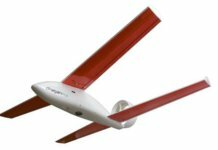Unmanned aircraft system (UAS) industry stakeholders have provided feedback on the Federal Aviation Administration’s (FAA) proposed rules for routinely flying drones at night and over people, as well as for drone safety and security issues.
The notice of proposed rulemaking (NPRM) for night/over-people flights would “allow operations of small unmanned aircraft over people in certain conditions and operations of small UAS at night without obtaining a waiver.”
Through an advance notice of proposed rulemaking (ANPRM), the FAA also sought input on “stand-off distances, additional operating and performance restrictions, the use of UAS Traffic Management (UTM), and additional payload restrictions,” as well as on “design requirements” and “critical safety systems” for UAS.
First outlined in January as drafts, the rulemakings had an April 15 deadline for submitting comments.
AUVSI
In its comments to the FAA, the Association for Unmanned Vehicle Systems International (AUVSI) argues that the proposed rules for flying over people are “too restrictive and [do] not consider the safety or societal benefits of the technology.”
Instead, the association believes the agency should follow a two-step approach: first, through a “revised framework that provides certainty for operators, such as safety compliance based on relevant standards and aircraft reliability, and permits operations over moving vehicles,” and second, through “new, performance-based regulations that more appropriately account for the low risks posed by UAS operations, backed by available data.”
Regarding the ANPRM, the group urges the FAA to “avoid imposing prescriptive requirements or adopting rules in the absence of specific concepts of operation.” Specifically, rules for stand-off distances, payloads and system redundancy could lead to “unintended consequences for commercial operators, such as increasing density of aircraft traffic or moving over sensitive areas, adding weight, complexity and cost and hindering the development of legitimate UAS operations.”
Regarding UTM, AUVSI believes it should be a priority for the FAA, but it should not be a “prerequisite for additional expanded operations.”
Notably, AUVSI also underscores the importance of a rulemaking for remote identification of drones, which has been “long delayed.”
“The adoption of these rules has already been delayed at least two years, and the FAA has made clear that even the rules now proposed in the NPRM will not take effect until the issues associated with remote identification of UAS in flight … are solved,” AUVSI says. “Any additional delay beyond what is strictly necessary in permitting operations over people will needlessly hinder the development of the UAS industry.”
DJI
In response to the NPRM, DJI says it is opposed to the proposal to prohibit flights over moving vehicles, which, for example, could pose “unjustified restrictions on the use of drones by public safety organizations.”
DJI focuses on the NPRM’s creation of a Category 1 for drones weighing under .55 lbs., which could be flown over people “without any special modifications or testing,” the company explains. However, it believes this weight limit – which was chosen in 2015 for the FAA’s drone registration requirement – is too low and should be doubled, at least.
For drones in Category 2 and Category 3, DJI argues that the requirements are “overly conservative.”
“The FAA proposes to set as the standard to injury caused to a person by a ‘rigid object’ impact that transfers 11 ft.-lbs. (Category 2) or 25 ft.-lbs. (Category 3) of kinetic energy,” says DJI, which explains that the FAA has said these numbers are “the same as those set for debris and shrapnel impacts from a commercial space launch operation, guided and unguided missiles, missile intercepts, and space re-entry vehicles.”
“This is not the appropriate standard for small drones because no small drone has the characteristics of rocket shrapnel, and the FAA’s injury studies are based on outdated studies from the 1960s.”
Instead, the drone manufacturer suggests the FAA should look to research from the Alliance for System Safety of UAS through Research Excellence (ASSURE).
Regarding the ANPRM, DJI notes it does not support the creation of “specific minimum stand-off distances between drones and people or property”; “new altitude, airspeed or other limitations in Part 107”; or “small UAS design requirements.”
However, it supports the use of UTM when it comes to “advanced operations that cannot be safely conducted because they are outside the pilot’s visual line of sight or involve autonomous or multiple-aircraft operations.” Although when it comes to “basic safety or security needs [that are] most directly within the judgment of the pilot in command,” DJI argues that UTM is not suitable.
Commercial Drone Alliance
Commenting on the NPRM, the Commercial Drone Alliance (CDA) says the proposed rules for flying over people are “far too restrictive and impose undue costs without any corresponding demonstrable safety or security benefit.”
The nonprofit specifically highlights issues it takes with “the prohibition on flights over moving vehicles, the singular focus on kinetic energy impact standards, the failure to recognize sophisticated operators for more expanded operations, and the narrow definition of ‘direct participant.'”
The CDA also argues that the NPRM’s risk analysis is “flawed” because it does not take into account “the likelihood or probability of a [drone] actually hitting a person or causing an injury.” Rather, the rulemaking’s kinetic energy impact standards “lack justification and are too low,” and focusing on kinetic energy “disincentivizes advancements in UAS technology that would otherwise enhance safety.”
“The CDA believes it is absolutely imperative for the FAA to promulgate a final rule that enables expanded commercial UAS operations over people without being unduly restrictive or jeopardizing safety or security,” the alliance says, adding that the final rule “must enable real-world UAS operations while protecting safety and security.”
Regarding nighttime operations, however, the CDA believes the proposal would be a “welcome step forward for the commercial UAS industry.”
Commenting on the ANPRM, the CDA also stresses the need for remote identification, which is “essential to establishing reasonable controls to protect against potential safety and security threats posed by UAS.”
“Since remote ID rulemaking is a gating item for any rules enabling expanded operations, the FAA should move expeditiously to publish an NPRM on remote ID of UAS,” the nonprofit says.
Small UAV Coalition
Also focusing on the need for remote ID is the Small UAV Coalition, which says in a press release, “While the coalition has long urged the FAA and the Department of Transportation to develop rules to enable expanded commercial operations, the NPRM itself is clear that no such regulations, including the operations-over-people proposal, will move forward until remote identification standards are in place. Unfortunately, DOT recently again pushed back the expected date of publication for this proposed rule, which is critical to enhancing safety, security, and privacy and unleashing the real potential for increased U.S. innovation in this industry.”
In its comments, the group says although it supports the proposal for operations at night, it opposes the proposal for over-people operations in regard to kinetic energy standards, which are “unduly restrictive” and do not “consider additional relevant risk factors.”
“Specifically, the proposed risk model is based on an assumption that an unmanned aircraft will hit a human being, and the specific limits are derived solely from the probable severity of the injury from the transfer of kinetic energy from a rigid object to a person upon impact,” the group writes.
“While these proposed kinetic energy limits ostensibly are based on standards developed for commercial space debris, this proposal uses only the impact part of the commercial space risk model and disregards the probability of occurrence risk.”
In response to the ANPRM, the coalition says the rulemaking “suggests that some prescriptive requirements may be added to Part 107 without any apparent evidentiary basis to determine that the operational conditions and limitations in Part 107 are inadequate.”
AMA
In its comments, the Academy of Model Aeronautics (AMA) underscores the need for the FAA to “account for the differences” between model aircraft and drones (i.e., hobbyist and commercial) when it comes to rulemaking.
“Our position is simple: Model aviation has introduced no new risk into the airspace and, therefore, should not be subject to new regulations,” the group writes. “We urge the agency to take into consideration the existing safety guidelines for modelers and account for the fact that model aircraft and commercial drones are not the same – the FAA cannot and should not take a one-size-fits-all approach to regulations.”
“AMA members do not need to be included in new rules for drone operators because they already follow AMA’s own proven set of safety guidelines, often at remote, fixed flying site locations,” AMA adds. “Our existing safety guidelines work – and there’s no reason to add new rules.”
As for its stance on UTM, the group recommends voluntary compliance for the model aircraft community, given the “existing safety code that limits AMA member operations to visual line of site and the potential cost of compliance.”
“For our community, participation in UTM should be voluntary, as it would be for manned aviation recreational flights,” the group explains in its comments. “AMA sees the UTM service as a potential path to achieve remote identification of model aircraft operations without requiring the model aircraft to carry a transmitter to broadcast the aircraft identifier.”









No response from the AOPA?
I do think there should be rules to protect people from surveillance as my former neighbor had a drone that he would fly over my apartment and while I was walking. Although many good people operate drones, there is potential for abuse unfortunately by stalkers due to the cameras attached, and small drones are very difficult to detect. My neighbor Dan in Florida had drones that he operated at night and over people. Thank You for allowing input.